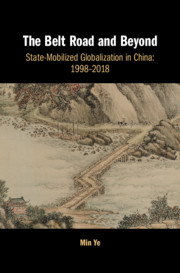Book contents
Bibliography
Published online by Cambridge University Press: 18 February 2020
- Type
- Chapter
- Information
- The Belt Road and BeyondState-Mobilized Globalization in China: 1998–2018, pp. 235 - 247Publisher: Cambridge University PressPrint publication year: 2020



